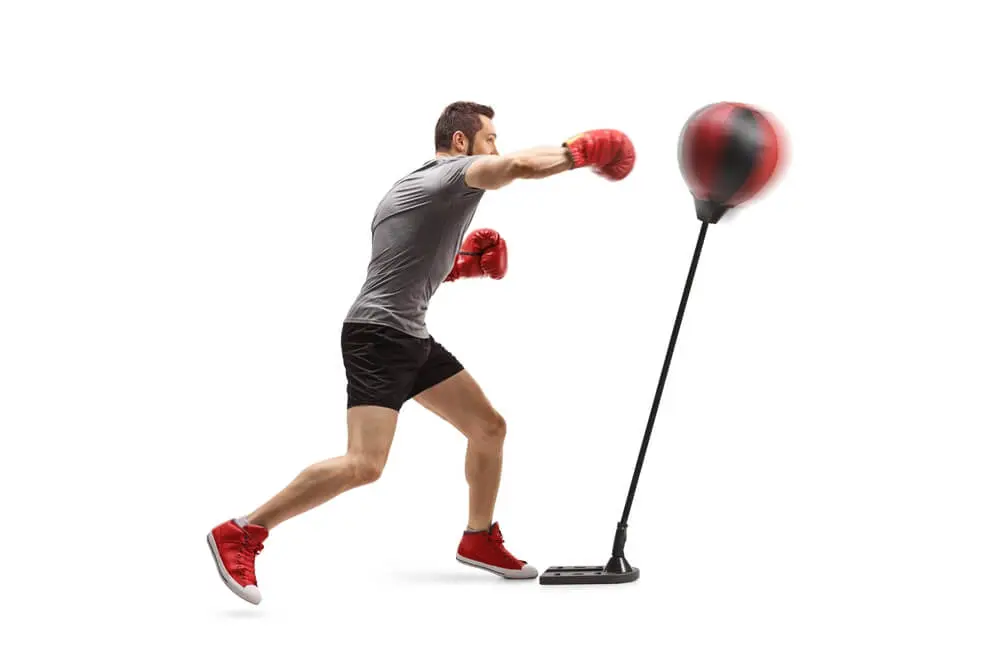How Do You Practice Boxing in a Small Space: Tips and Tricks

Imagine this: a dedicated boxer, gloves on, sweat dripping, standing in the middle of a small apartment living room or a cramped garage. The couch has been pushed to one side, and the coffee table is now doubling as a training bench. There’s barely enough room to throw a proper jab, yet every punch is precise, every movement calculated. This isn’t a professional gym with endless space and equipment, but the commitment and drive are just as intense. It’s proof that you don’t need a sprawling space to hone your boxing skills—you just need a bit of creativity and the right approach.
Despite limited space, effective boxing training is not only possible but can be highly productive with a bit of creativity and proper technique. Whether you’re shadowboxing in a small living room or working on your footwork in a narrow garage, the key lies in maximizing the space you have and adapting your training methods to fit your environment.
1. Essential Equipment for Small Space Boxing
When training in a confined space, it’s crucial to focus on a minimalist setup that doesn’t compromise the quality of your workout. Even with limited room, you can maintain an effective boxing regimen with just a few key pieces of equipment.
i. Minimalist Setup:
Start with the basics. Boxing gloves and hand wraps are must-haves, providing protection and support for your hands during intense sessions. A heavy bag is another staple for practicing powerful punches and combinations. If floor space is tight, you might consider a freestanding heavy bag that can be easily moved or stored away when not in use.
ii. Space-Saving Options:
For those who need to be even more mindful of space, there are innovative solutions available. A wall-mounted heavy bag is a great alternative, offering the resistance of a traditional bag without taking up valuable floor space. Portable speed bags are also a fantastic option, allowing you to work on your timing and hand speed without needing a large setup. Additionally, resistance bands can be incredibly versatile—they’re lightweight, easy to store, and can be used for a variety of exercises, from shadowboxing with added resistance to strengthening your core and upper body.
2. Effective Workouts in a Small Space
Training in a small space doesn’t mean you have to sacrifice the quality of your workouts. By focusing on exercises that don’t require much room, you can still achieve a well-rounded boxing regimen that improves technique, builds strength, and enhances conditioning.
i. Shadowboxing:
Shadowboxing is one of the most effective ways to practice your technique and footwork without needing any equipment. In a small space, it allows you to work on your stance, movement, and punch combinations with precision. Focus on maintaining proper form, visualizing your opponent, and moving fluidly within the confined area. This exercise also helps improve your agility and reaction time, making it an essential part of any small-space boxing routine.
ii. Bag Work:
If you have access to a heavy bag or a wall-mounted bag, you can still engage in intense bag work even in a limited area. Use this opportunity to target specific punches and combinations, refining your power and accuracy. Work on drills like jab-cross-hook sequences or body shots, and practice moving around the bag within your available space. This focused approach allows you to make the most out of each session, even if you’re working in a smaller environment.
iii. Resistance Band Training:
Resistance bands are a fantastic tool for building strength and power without needing much room. Incorporate them into your shadowboxing routine to add resistance to your punches, which helps develop explosive power. You can also use resistance bands for strength training exercises, such as rows, shoulder presses, and squats. These bands are highly versatile and can be easily stored away, making them perfect for small-space training.
iv. Bodyweight Exercises:
To round out your training, include bodyweight exercises that enhance your overall fitness and conditioning. Push-ups, squats, lunges, and planks are all effective exercises that require minimal space but deliver maximum results. These exercises not only build strength but also improve endurance and core stability, which are crucial for a boxer’s performance in the ring.
3. Tips for Maximizing Space Efficiency
When training in a small area, maximizing space efficiency is key to creating an environment that supports your boxing routine. With a few smart strategies, you can transform even the tightest space into a productive training zone.
i. Creating a Designated Training Area:
The first step in making the most of a small space is to establish a designated training area. This means clearing out any unnecessary clutter and organizing your equipment so that it’s easily accessible. Consider using storage solutions like bins or shelves to keep your gloves, wraps, and other gear neatly stored when not in use. Having a clean, organized space will help you focus on your workout and reduce distractions, allowing you to train more effectively.
ii. Utilizing Vertical Space:
When floor space is limited, look upwards. Utilize vertical space by installing wall-mounted equipment such as heavy bags, speed bags, or hooks for resistance bands. This not only saves floor space but also keeps your training tools within easy reach. Mirrors are another great addition to a small training area. By mounting a mirror on the wall, you can visually monitor your technique and form during shadowboxing and other exercises, making the most of your vertical space while improving your performance.
iii. Scheduling Workouts:
Effective time management is crucial for consistent training, especially when dealing with space constraints. Create a workout schedule that fits your routine and stick to it. This helps ensure that your training remains consistent, even in a small space. Consider breaking your workouts into shorter, more frequent sessions if space availability is an issue, allowing you to maximize the use of your training area without feeling cramped or rushed.
4: Mental Preparation and Motivation
Training in a small space can sometimes feel limiting, but with the right mental preparation and motivation, you can stay focused and make significant progress. Cultivating a strong mindset is just as important as the physical aspects of your training.
i. Visualization Techniques:
Visualization is a powerful tool in any boxer’s mental arsenal. By imagining successful training sessions, you can mentally prepare yourself for the physical work ahead. Picture yourself executing flawless combinations, moving swiftly around your limited space, and achieving your training goals. Visualization helps you build confidence, reinforces positive habits, and keeps you mentally engaged, even when the physical space might be tight.
ii. Setting Goals and Tracking Progress:
Setting clear, achievable goals is essential for staying motivated, especially when training in a confined area. Whether it’s mastering a specific punch, improving your footwork, or increasing your endurance, having defined objectives gives your training purpose. Track your progress regularly, noting improvements in technique, speed, and strength. Celebrate small victories along the way, as they serve as reminders of your hard work and dedication, helping you stay focused and motivated.
iii. Finding Inspiration:
Sometimes, a little external inspiration can go a long way in keeping your spirits high. Watching boxing matches, especially those of your favorite fighters, can reignite your passion for the sport. Pay attention to their techniques, strategies, and the intensity they bring to the ring. You can also follow professional boxers on social media or through their training videos to gain insights and stay inspired. Seeing their dedication can fuel your own, motivating you to push through any limitations your space might present.

